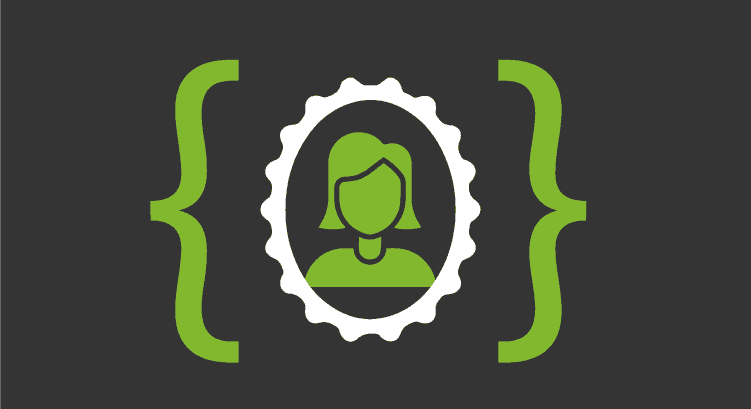Who is Ada Lovelace? Well, the first programmer in history
Do you like those stories of legendary developers who programmed in the solitude of their room or in a small garage? But what about those who did it after getting out of a carriage and by the light of a fireplace?
Ada Lovelace was ahead of her time. She was a pioneer whose name has been engraved forever. Do you want to know her story?
Who is Ada Lovelace?
Daughter of the legendary English poet Lord Byron, Countess of Lovelace, Augusta Ada Byron was born on 10 December 1815 in the city of London, due to the union between the poet and his mother, Anna Isabella Noel, a great lover of mathematics and social activist.
Her mother’s fondness and her determination to get Ada through a strict training were probably some of the main reasons why Ada would end up becoming a computer legend. Ada, who had not been able to meet her father since they separated two months after her birth and died a few years later without being reunited, remained under the tutelage of her mother, receiving an exquisite education and mixing with some of the main figures of the time, such as Michael Faraday, Charles Dickens or Mary Somerville, who was her guardian. Years later, Ada married the aristocrat William King, who years later would become Count of Lovelace, for which reason Ada would sign all her documents thereafter as Ada Lovelace, the name under which she went down in history.
But probably the relationship we are most interested in is the one she established with the English mathematician Charles Babbage.
When Ada met Babbage at one of London’s high society’s festivals, he was known for his attempts to create a machine capable of performing calculations without the help of any human being, which he called “differential machine”, later known as “analytical machine”.
That was the beginning of an exchange of ideas and a friendship that would last for many years. However, the more formal part of the collaboration between Lovelace and Babbage began in 1841, when Ada began translating an article by Italian scientist Luigi Federico Menabrea. The work, which she called Notes, evolved in such a way that the translation became an annex to the main part, in which Lovelace developed her own study of the analytical machine.
In her study, Ada develops some concepts that were very advanced for her time and that would serve to lay the foundations of computing many years later, such as the distinction between data and processing. Lovelace was taking the first steps towards the creation of computer science, which she called operations science, and was able to glimpse, even more deeply than Babbage – who was more focused on the mechanical part of the work – the practical implications of the machine. To put it simply, while Babbage was creating the first hardware, Lovelace was developing the first software. However, it must be said that the machine remained in the theoretical plane, because it was never built. However, from that collaboration valuable concepts emerged.
The first program in History
Ada structures her work Notes in 7 labels, from the letter A to the letter G. In the G, dedicated to Bernoulli numbers, Lovelace describes in detail the sequence in which the punched cards should be used to introduce instructions to the machine. Or, in other words, Lovelace writes the first algorithm designed to be executed on a computer, that is, the first program in History. But who is Ada Lovelace?
Ada’s work was published in Scientific Memoirs in September 1843, under the title “Sketch of the analytical engine invented by Charles Babbage”. Although she did not sign with her name but with the initials A.A.L., the authorship was soon known and, unfortunately, since it came from a woman it was undervalued at the time.
However, Lovelace’s work contained profound observations well ahead of her time. For example, she was able to go beyond the numerical character of the machine, proposing other uses for it, such as musical composition. She understood that other things (musical notes, letters, etc.) could be represented by numbers -beyond the numbers themselves-, which meant going from calculation to computation.
Who is Ada Lovelace? Not only theoretically, but also practically, Lovelace made some very important contributions. She established the idea of using punched cards to insert instructions into the analytical machine (probably from her knowledge of Jacquard’s loom) and developed a notation for writing programs.
But who is Ada Lovelace? Undoubtedly, the figure of Ada Lovelace was a pioneer in the development of what we know today as information technology, and played a key role.
In the days of Ada Lovelace… Pandora FMS didn’t exist yet! In fact, it took a long time to be created; although it also has its little story.
Pandora FMS was born in 2003 and has been developed since then to become one of the best monitoring software in the market. Do you want to know its story? Check this out: https://pandorafms.org/en/community/pandora-fms-history/
Pandora FMS is one of the most flexible monitoring software on the market. Pandora FMS is able to monitor devices, infrastructures, applications, services and business processes.
Do you want to know better what Pandora FMS can do for you? Click here:
https://pandorafms.com
Or you can also send us any doubt you may have about Pandora FMS. You can do it in a very simple way, thanks to the contact form that can be found at the following link: https://pandorafms.com/contact/
Our Pandora FMS team will be happy to assist you!
Pandora FMS’s editorial team is made up of a group of writers and IT professionals with one thing in common: their passion for computer system monitoring. Pandora FMS’s editorial team is made up of a group of writers and IT professionals with one thing in common: their passion for computer system monitoring.

















